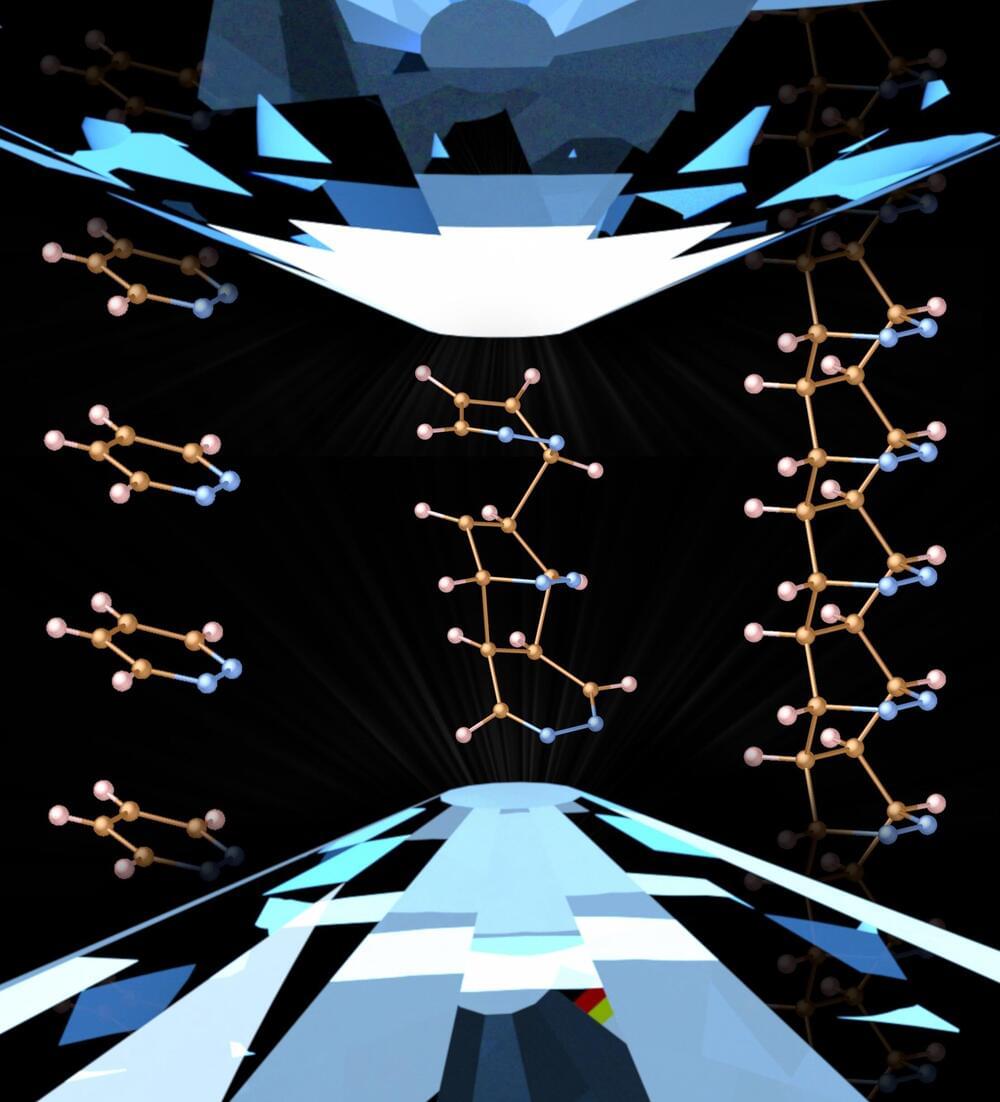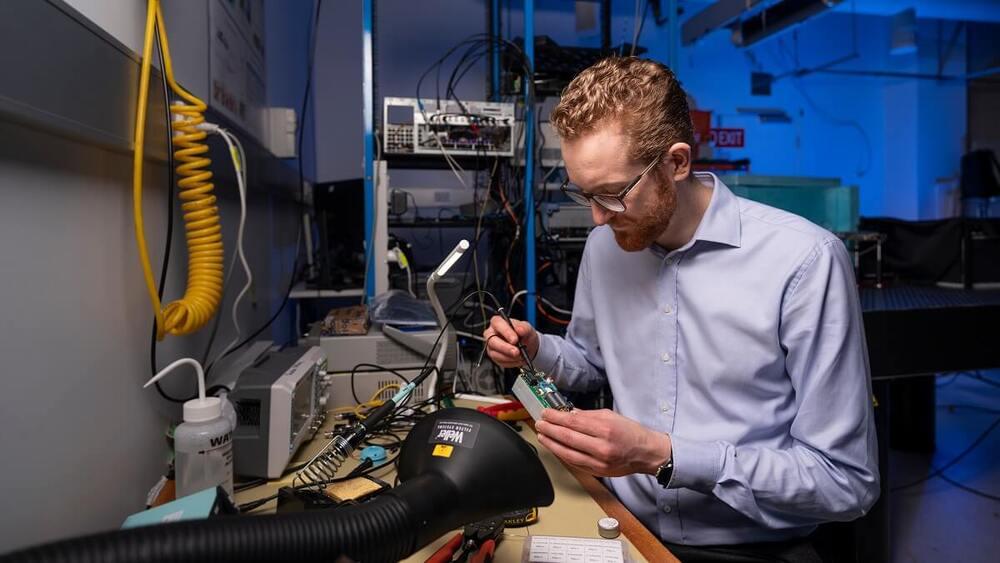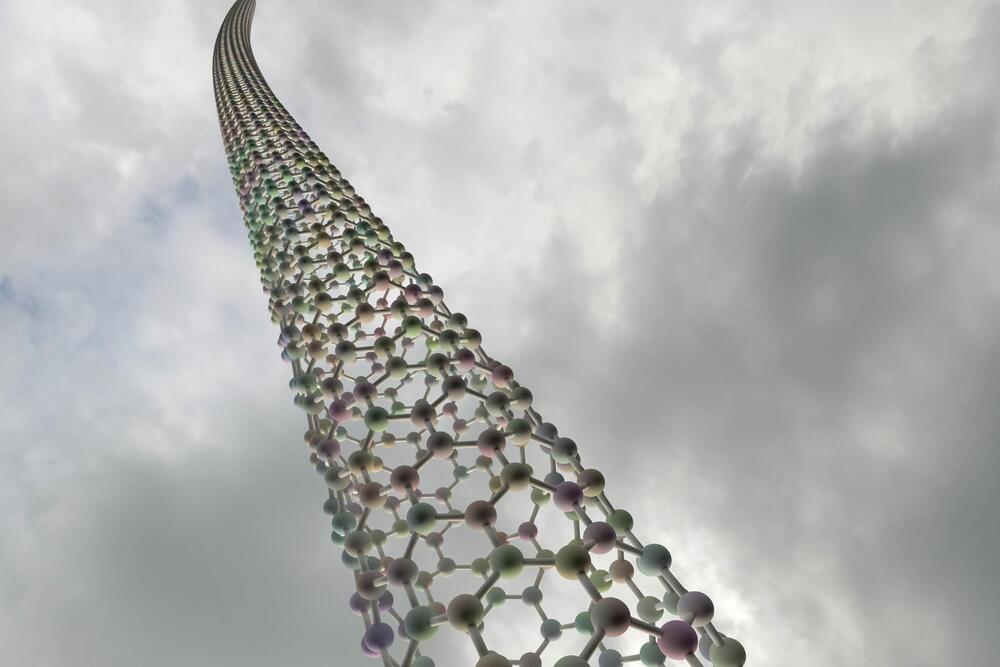Page 5466
Mar 2, 2022
Meta says its metaverse ambitions won’t be possible without better cellular networks
Posted by Shubham Ghosh Roy in category: habitats
Meta, formerly Facebook, has said that its grand ambition of building the ultimate “metaverse” won’t be possible if there aren’t drastic improvements in today’s telecoms networks.
The metaverse is a buzzword that’s being hyped up as the next big thing in tech. Broadly speaking, the concept refers to a seamless virtual world where people can work, shop and play with their colleagues, friends and family.
Dan Rabinovitsj, VP of connectivity at Meta, told CNBC at the Mobile World Congress tech event Monday that home networks and cellular networks aren’t yet ready for the metaverse.
Mar 2, 2022
E-scooter riders are confused about where to ride and what regulations to follow
Posted by Shubham Ghosh Roy in category: robotics/AI
Function receiveMessage(event) { console.log(event.data.fullscreen); Android.fullscreen(event.data.fullscreen); } window.addEventListener(“message”, receiveMessage.
Mar 2, 2022
A first glimpse of the human brain’s drains
Posted by Nicholi Avery in category: neuroscience
𝐌𝐞𝐝𝐢𝐜𝐚𝐥 𝐔𝐧𝐢𝐯𝐞𝐫𝐬𝐢𝐭𝐲 𝐨𝐟 𝐒𝐨𝐮𝐭𝐡 𝐂𝐚𝐫𝐨𝐥𝐢𝐧𝐚:
The Neuro-Network.
𝐀 𝐟𝐢𝐫𝐬𝐭 𝐠𝐥𝐢𝐦𝐩𝐬𝐞 𝐨𝐟 𝐭𝐡𝐞 𝐡𝐮𝐦𝐚𝐧 𝐛𝐫𝐚𝐢𝐧’𝐬 𝐝𝐫𝐚𝐢𝐧𝐬
Continue reading “A first glimpse of the human brain’s drains” »
Mar 2, 2022
Discovered: An easier way to create ‘flexible diamonds’
Posted by Quinn Sena in categories: chemistry, materials
As hard as diamond and as flexible as plastic, highly sought-after diamond nanothreads would be poised to revolutionize our world—if they weren’t so difficult to make.
Recently, a team of scientists led by Carnegie’s Samuel Dunning and Timothy Strobel developed an original technique that predicts and guides the ordered creation of strong, yet flexible, diamond nanothreads, surmounting several existing challenges. The innovation will make it easier for scientists to synthesize the nanothreads—an important step toward applying the material to practical problems in the future. The work was recently published in the Journal of the American Chemical Society.
Diamond nanothreads are ultra-thin, one-dimensional carbon chains, tens of thousands of times thinner than a human hair. They are often created by compressing smaller carbon-based rings together to form the same type of bond that makes diamonds the hardest mineral on our planet.
Mar 2, 2022
Small, diamond-based quantum computers could be in our hands within five years
Posted by Quinn Sena in categories: computing, quantum physics
Circa 2021
Small, affordable, ‘plug-and-play’ quantum computing is one step closer. An Australian startup has won $13 million to make its diamond-based computing cores shine. Now it needs to grow.
ANU research spinoff Quantum Brilliance has found a way to use synthetic diamonds to drive quantum calculations. Now it’s on a five-year quest to produce commercially viable Quantum Accelerators. The goal is a card capable of being plugged into any existing computer system similar to the way graphics cards are now.
Continue reading “Small, diamond-based quantum computers could be in our hands within five years” »
Mar 2, 2022
NATO cybersecurity center finishes tests of quantum-proof network
Posted by Shubham Ghosh Roy in categories: cybercrime/malcode, quantum physics
Mar 2, 2022
OneWeb: UK rejects Russian demand to sell share in satellite firm
Posted by Shubham Ghosh Roy in categories: government, satellites
Russia’s space agency is refusing to launch OneWeb satellites part-owned by the UK government.
Mar 2, 2022
Quantum Friction Explains Water’s Freaky Flow
Posted by Shubham Ghosh Roy in categories: nanotechnology, particle physics, quantum physics
Schran agrees. “This new mechanism of friction is definitely very interesting and exciting,” he says. “But what is missing in my opinion, is a clear benchmark measurement.” Quantifying, for instance, how friction changes based on water’s interaction with single versus multiple layers of carbon atoms could go a long way to fully verifying the new theory, which predicts that greater numbers of electrons in the multilayered carbon will boost friction.
The study team is already progressing along this path and dreaming of what lies beyond. They are hoping to eventually test their theory with flowing liquids other than water, and nanotubes composed of elements besides carbon. In such cases, molecules in the liquid and the electrons within nanotube walls would follow different patterns of interaction, possibly leading to changes in the degree of quantum friction. Lydéric Bocquet says that it may even be possible to control the amount of friction a flowing liquid experiences by constructing nanotubes with electron behavior explicitly in mind.
The new study sets the stage for years of complex exploration by experimental and theoretical physicists alike and, according to Kavokine, also signals a fundamental shift in how physicists should think about friction. “Physicists have long thought that it is different at the nanoscale, but this difference was not so obvious to find and describe,” he says. “They were dreaming about some quantum behavior arising at these scales—and now we have shown how it does.”
Mar 2, 2022
Intel Axes Alder Lake’s AVX-512 Support, Now Fuses It Off in Silicon
Posted by Shubham Ghosh Roy in category: futurism
Flipping the fuses ends the story.
Intel is now disabling support for AVX-512 instructions in its Alder Lake processors by fusing it off inside the silicon.
















